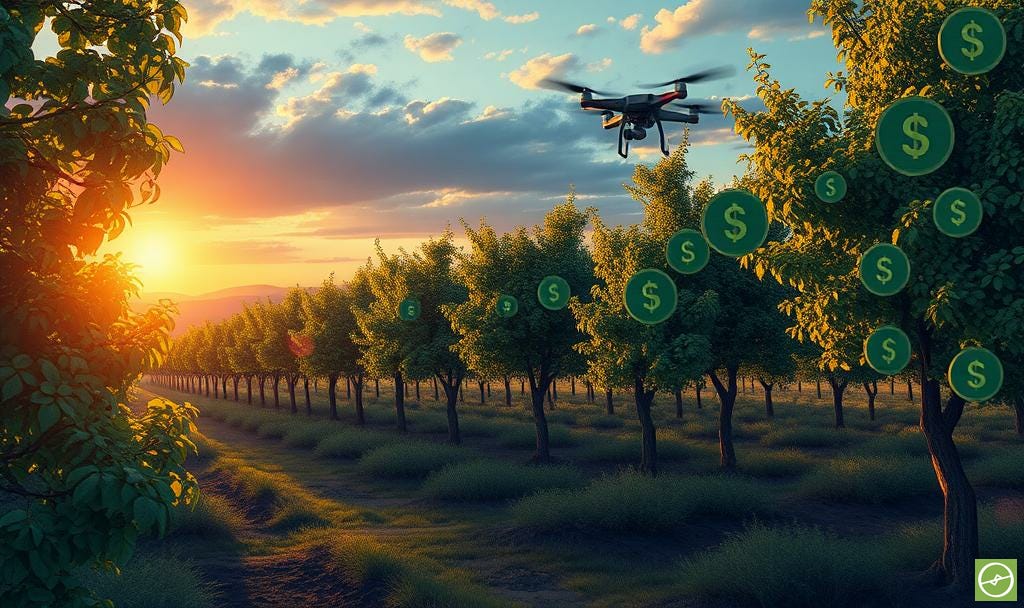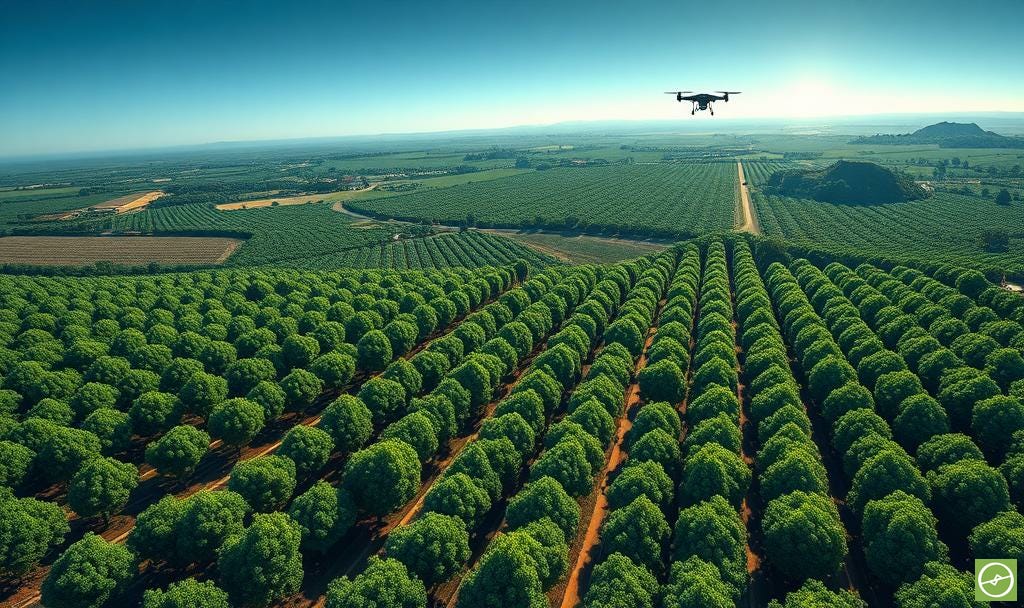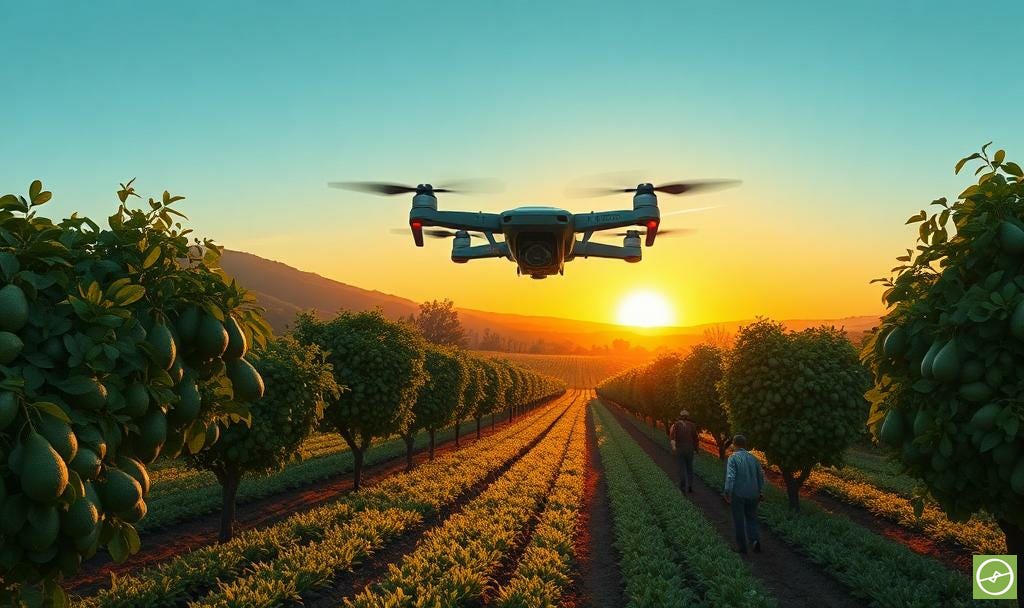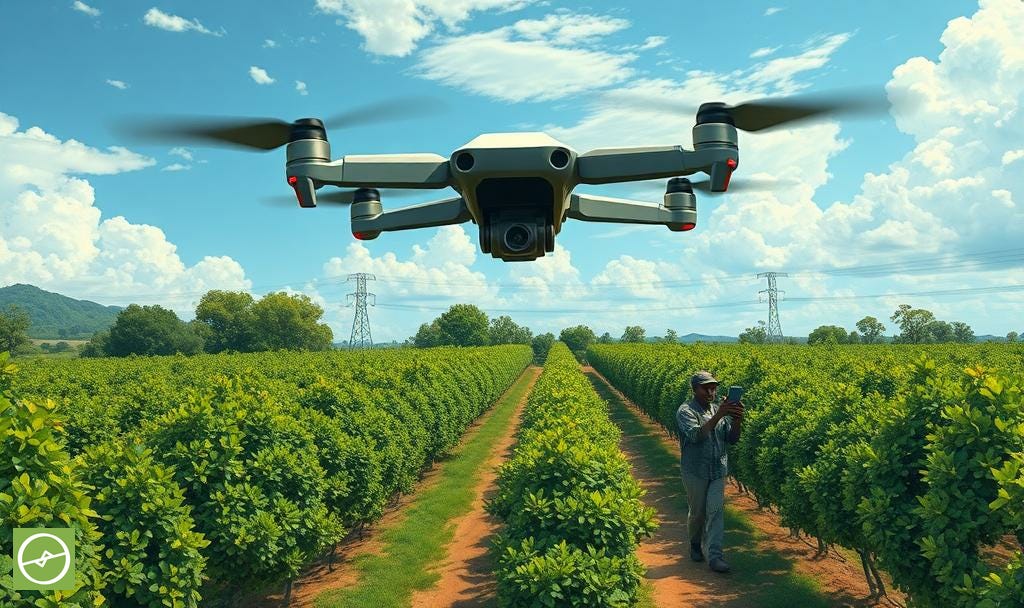Orchard Stress to Profitability: How Drone Data Guides Smarter Sampling
Precision Sampling with Drones and AI. How to Turn Orchard Variability into Profitable Management Decisions
Modern farming is a game of margins. Input costs rise. Market expectations tighten. And yet, small changes on the farm can tip the scales towards profitability.
Achieving optimal fruit size, hitting those peak yields, or even pushing a block beyond break-even point, often comes down to decisions made in-season.
This is where precision sampling – powered by drone data and Artificial Intelligence – offers a measurable edge.
Why traditional sampling often falls short
In orchards, early sampling results can look promising.
Flowering is strong. Initial fruit set is positive. Post-drop counts still look good….
But at harvest, reality tells a different story.
Tonnage is low. Fruit size is off of the market’s sweet-spot. Returns disappoint.
The reason: Those initial samples you did? They weren’t representative.
Random scouting gave a false view of crop potential, leaving managers blind to the true story hidden within the block.
Drone-derived data in the right hands changes that.
Drone data and AI-powered smart sampling
Per-tree insights drive representative sampling.
Instead of guessing where to sample, AI identifies trees that best represent orchard variability. This ensures you capture the true state of the crop – fruit size, health, and yield potential.
Targeted interventions become possible.
When drone maps highlight the trees “letting the side down”, inputs can be directed where they count. Adjust irrigation, fine-tune nutrition, thin fruit, or intensify monitoring in specific areas; without wasting time and money across the entire block.
Action doesn’t stop at yield-related years.
Post-harvest drone scans, or surveys during non-bearing phases, will uncover valuable patterns. Zonal stress, canopy variance, or abrupt changes in multispectral metrics can flag irrigation issues, soil constraints, or disease hotspots. Clear thresholds help farmers prioritise interventions that protect future productivity.
A case study in margins: the Avocado block dilemma
When a new manager took over an established avocado farm in South Africa, the numbers told a hard truth: several blocks weren’t just underperforming… they were losing money.
Rising input costs were outpacing per-hectare income, and the farm was at risk of slipping below break-even. But drone scans revealed the weak links.
Two blocks, incorrectly planted on shallow, wind-exposed soils, showed stunted canopies and high stress values. The data-backed decision was made to pull these blocks and redirect inputs elsewhere. A painful choice, but one that stopped further losses.
In the business of farming, producing blocks need to pay for themselves to ensure longterm prosperity - especially in turbulent times and tricky markets.
Other blocks told a different story. Per-tree data highlighted small pockets of poor performers. Diseased trees, gap-fillers that never established. Others damaged by irrigation, machinery, or the native wildlife.
These weren’t reasons to scrap the block. Instead, targeted interventions brought gradual improvements, lifting yields and restoring profitability over a few successive seasons.
But one block refused to improve. Year after year, it showed elevated stress, poor fruit size, and inconsistent low-tonnage returns. The evidence pointed to a rootstock issue - a problem built into the orchard from the start.
Here, the manager faced the toughest decision: Rip-out and replant? Or top-work with a new scion cultivar? Choices that would come with some risk, and no doubt mean absorbing years without income, pouring money into the block. The alternative would be to continue with paltry gains, seemingly wasted inputs, and a slender ROI.
Either way, the lesson is clear: drone data and smart sampling don’t remove tough choices, but they will provide added clarity.
With clarity, managers can cut losses in one place and focus efforts where they will pay off. And rest easy in the fact that their decisions were data-lead and data-backed.
Turning data into ROI
Pulling out a block is never easy, but sometimes saving money is the only path to making money. In the case above, drone data provided the clarity: cut the losses in one orchard to unlock ROI in another.
Profitability wasn’t about pouring in more fertiliser, labour, or water - it was about choosing where not to spend them.
The toughest decisions in farming aren’t always about yield; they are about return on investment. And when the numbers don’t add up, clarity from the air can protect the bottom line.
Drone data combined with AI does not remove all uncertainty; it manages it.
By linking per-tree health metrics and impactful indices, with sampling waypoints for ground inspections, farmers can:
Detect underperforming zones before losses accumulate.
Guide interventions precisely to trees or rows where they matter.
Benchmark performance against historical records or neighbouring blocks.
Decide strategically when to rehabilitate, replant, or remove.
This is not about chasing perfect orchards. It’s about making smarter decisions that improve returns. One tree, one block, one season at a time.
The best part is that in using our own knowledge and expertise, and tying those into historical figures, known realities, and new-found insights… we land up making the right ROI decisions every time.
The future of precision sampling
Technologies like the Aerobotics drone scans + smart sampling already deliver AI-selected sampling trees and per-tree insights. Farmers can forecast fruit size, evaluate thinning strategies, and align with market programmes months ahead of harvest. A game changer.
The next frontier is deeper integration: combining drone-derived maps with real-time soil sensors, weather models, and digital twins.
These tools will not only identify variability, but also simulate how different interventions might play out before a single input is applied.
The direction is explicit. Data-driven sampling is no longer a “nice-to-have”. It is a foundation piece for profitable, resilient farming.
Small, targeted changes create big shifts in ROI.
Precision sampling ensures those changes are made in the right place, at the right time, and for the right reasons. In the rights hands, a strong catalyst for positive change and years of farming prosperity.
The thinking starts here, but the real change starts when you take action.
Introducing the Avocado Innovation Series
Looking at the statistics behind this newsletter, one thing is clear….
Per-tree Sampling Methods: Using AI for the Unfair Advantage
We can now use AI to generate sampling points (individual trees) based off the drone data metrics. Mostly used for crop and yield monitoring.







